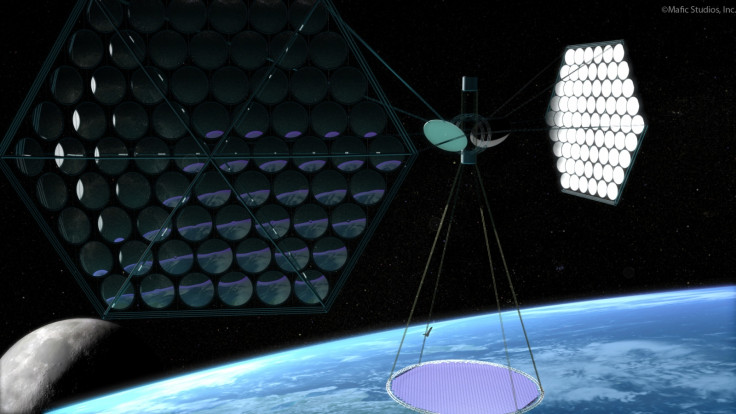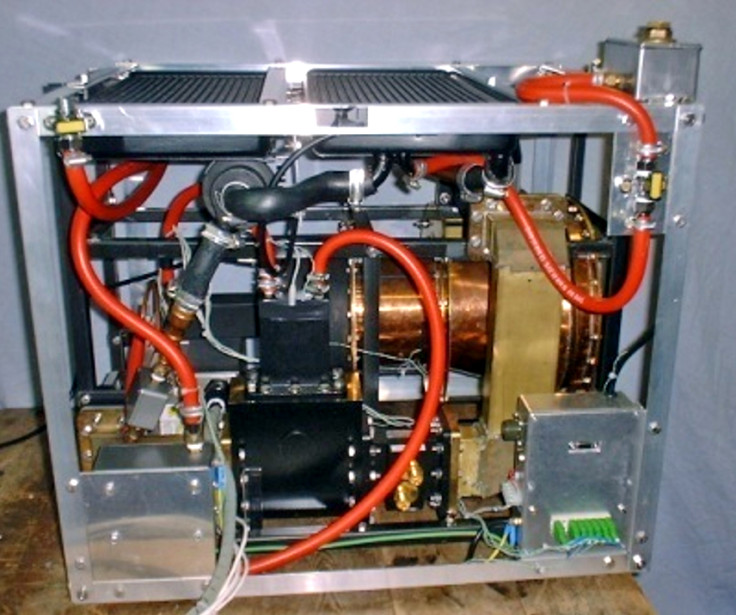EmDrive: Could Microwave Thrusters be Key to Ending the Global Energy Crisis?

Wouldn't it be nice if there was a way to launch satellites into space cheaply to be used as a source of never-ending space solar power and end the world's energy crisis for good?
This is the future as imagined by Roger Shawyer, a British scientist who has spent years promoting his research on a highly controversial space propulsion technology called EmDrive.
Although he has been ridiculed and even accused of fraud by some in the international space community after New Scientist wrote about his invention in 2006, the proof is in the pudding as now Nasa has started testing the technology and says that it does indeed work.
"The space industry doesn't want to know about it as it's very disruptive. If the customer will spend hundreds of millions of dollars on launching a satellite, why would you want to make something that could do it cheaper?" Shawyer tells IBTimes UK.
"This technology is a quantum leap – it would enable vertical take-off and landing for airplanes, it's quiet and it uses liquid hydrogen as a fuel, so it's green too."
What is EmDrive?
EmDrive is based on the theory of special relativity that it is possible to convert electrical energy into thrust, without the need to expel any form of repellent.
Currently, the cost of launching a satellite into space is incredibly expensive, particularly where the satellite has to be transferred from low Earth orbit (LEO) to geostationary orbit (GEO).

If electrical propulsion were to be used, it could hugely cut costs and greatly extend the operational lifetime of the satellite.
Shawyer's critics say that according to the law of conservation of momentum, his theory cannot work as in order for a thruster to be propelled forwards, something must be pushed out of the back of it in the opposite direction.
"Momentum, according to one of our basic principles, is conserved and cannot be created or destroyed. The craft is breaking this rule. In a conventional rocket, thrust is achieved without breaking the rule because the combined momentum of the craft and the exhaust gas from the rocket cancel each other out as they move in exactly opposite directions," wrote New Scientist reader Paul Friedlander, just one of the many people who emailed the magazine after reading the piece in 2006.
However, EmDrive does preserve the conservation of momentum and energy – to put it simply, electricity converts into microwaves within the cavity which push against the inside of the device, causing the thruster to accelerate in the opposite direction.
Shawyer proved that if you had a 100kg spacecraft, the thrust would be in a clockwise direction, and the spacecraft would then accelerate in an anti-clockwise direction.
Mocking science that they didn't understand
"There was an element of not wanting to disrupt the industry, but also a total ignorance in the laws of physics," says Shawyer. "They did make life difficult for me for a while."
The UK government is satisfied that Shawyer's results are legitimate and funded him until the research project was completed in 2007.
Two years later, Boeing paid the UK government to licence the technology. The airplane manufacturer is being funded by the US military to develop the technology, so their progress has been kept strictly under wraps, says Shawyer.
While the West has been dismissing EmDrive, Chinese scientists independently proved that it works in 2012. They succeeded in producing 720 milliNewtons (72g) of thrust in a system they built using a completely different theoretical method, although no one took much notice of their results.
That amount of thrust could be used to keep the International Space Station in orbit indefinitely, showing that the Chinese are far ahead of the rest of the world.
Now US scientist Guido Fetta has developed his own way to make a tapered microwave thruster work, but Nasa's recent tests of his invention only managed to produce 30-50 microNewtons (or rather, 0.03-0.05 milliNewtons).
Fetta's research is pretty much where Shawyer was in 2003.
Making space solar power a reality
Forty years ago a theory suggested that if we could get enough satellites into orbit, the satellites could channel solar power to Earth, meaning we would have a free and constant source of energy.
The International Academy of Astronautics published a report on space solar power in 2011 showing that it was possible and since then, the voices of space solar power proponents have been growing even stronger, such as Japan's Shimizu Corporation, which wants to generate solar power on the moon.
"The US air force did a study on this because they realised that space solar power could stop wars," says Shawyer.
"If you can put thousands of tonnes of space equipment into orbit cheaply, you can put up solar satellites to solve the energy crisis and sun shades to cool the earth. If you can reduce the earth's temperature by 1.7%, you can cool the earth to its pre-industrial period."
Shawyer thinks that the technology is inevitable for the space industry, no matter how much they may try to argue against it.
To that end, backed by private investors, he has developed a souped-up second generation version of the EmDrive that uses super conductors and an asymmetrical cavity to increase the thrust by up to five orders of magnitude, which would top the Chinese invention by far.
"If you used existing launch technology, launching a 2 Gigawatt power station would cost $194 billion (£115bn) and require 1,700 Atlas V rockets. Using EmDrive Gen 2, we reckon we can do it for $1.5 billion," says Shawyer.
"We're talking to some serious people about it, but not in the UK. Although Nasa is a long way behind, it's important that it's the third independent successful test data that has been published. It will be America or China who come up with big applications for this technology."
© Copyright IBTimes 2025. All rights reserved.






















